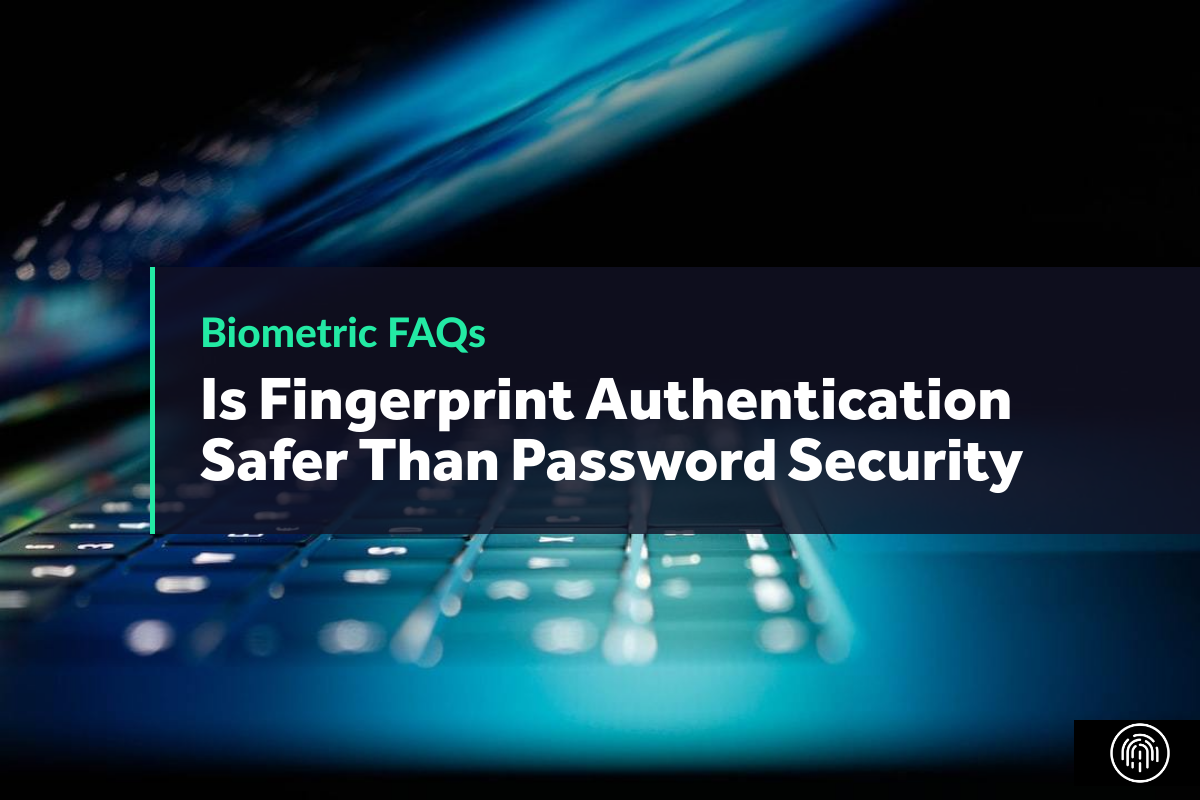In this article we’re going to be discussing the differences between fingerprint and password security, and talking about whether fingerprint authentication is indeed safer than password security.
Therefore, without further ado, let’s get into it!
What is Fingerprint Recognition
Fingerprint recognition is a biometric technology that uses an individual’s unique fingerprint patterns to identify them. This technology can be used for a variety of purposes, such as verifying a person’s identity, authorizing access to certain areas or devices, or tracking attendance. Fingerprint recognition is generally considered to be more accurate and reliable than other biometric technologies, such as iris or facial recognition.
What is Password Security
Password security is the process of protecting a password from unauthorized access. It includes both the physical and logical security of the password. Physical security includes measures to protect the password from being physically accessed by unauthorized individuals. This might include keeping the password in a secure location or using a biometric authentication system. Logical security includes measures to protect the password from being guessed or brute forced by unauthorized individuals. This might include using a strong password policy or using two-factor authentication.
Is Fingerprint Authentication Safer Than Password Security
Fingerprint authentication is often seen as a more secure alternative to password security, as it is more difficult to spoof or copy someone’s fingerprint than it is to guess or steal their password. However, there are some potential drawbacks to using fingerprint authentication, such as the possibility of false positives (when an incorrect fingerprint is accepted as valid) or false negatives (when a valid fingerprint is rejected). Additionally, if someone’s fingerprint data is compromised, they may have less recourse than if their password was compromised, as they cannot change their fingerprints like they can change their passwords. Overall, fingerprint authentication can be seen as a more secure option than password security, but it is not perfect and has some potential risks.
Frequently Asked Questions
What is biometric authentication?
Biometric authentication is a process of authenticating a user based on their physical or behavioral characteristics. Common biometric modalities include fingerprint, face, iris, and voice recognition. Biometric authentication is more secure than traditional password-based authentication because it is difficult to spoof or copy someone’s biometric information.
Where are biometrics used?
Biometrics are used in a variety of ways, most commonly to unlock devices such as smartphones and laptops. In order to unlock these devices, you must use your biometrics, such as your fingerprint or iris scan. This is done in order to ensure that only you have access to your device.
What Is the Most Secure Authentication Method?
There is no single most secure authentication method, as different security methods are better suited for different purposes. However, multi-factor authentication, which combines two or more independent authentication factors, is generally considered to be the most secure authentication method. Facial recognition, fingerprint scanning, and iris recognition are all examples of possible authentication factors that could be used in a multi-factor authentication system.
Can you outsmart a fingerprint sensor?
Fingerprint scanners are becoming increasingly common, as they are used in a variety of settings such as online banking apps and password authentication systems. However, there is always the possibility that cybercriminals may find a way to bypass these scanning technologies.
One method that has been used to fool fingerprint sensors is to use a high-resolution image of a fingerprint. This image can be used to create a fake finger that can then be used to bypass the sensor. However, this method is not foolproof and may not work on all types of fingerprint scanners.
Another way to outsmart a fingerprint sensor is to use a 3D-printed finger. This method is more likely to work on scanners that use optical sensing technology. Bypassing a fingerprint sensor can allow criminals access to sensitive information or systems, so it is important to be aware of these methods and take steps to protect yourself.
Does it make sense to rely on fingerprint scans for security?
It makes sense to rely on fingerprint scans for security, as they provide an extra layer of authentication beyond passwords. Passwords/Passcodes can be easily guessed or reused, but fingerprints are unique to each individual and much harder to fake. Additionally, fingerprint scanners can be used in conjunction with other security systems, such as two-factor authentication, to further secure devices and accounts.
How Safe Is Password Security?
A password or passcode is a security option used to protect smartphones and other devices. Passwords are easy to remember and use, but they can also be easily hacked. Using a pin or fingerprint scan is a more secure way to protect your device.
How Safe Is Fingerprint Security?
A lot of people are using fingerprint scanner to unlock their mobile devices, and smartphones. But, is it really safe? Can hackers bypass the fingerprint scanner and fool the sensor?
Well, it depends. If you’re using a high-resolution fingerprint scanner, it’s quite difficult for hackers to bypass it. However, if you’re using a low-resolution fingerprint sensor, it’s easier for hackers to fool the sensor.
So, if you’re using a fingerprint scanner to unlock your mobile devices or smartphones, make sure that it has a high-resolution fingerprint sensor.

